Impulsive solar flare measuring M6.7 erupted from Region 2529
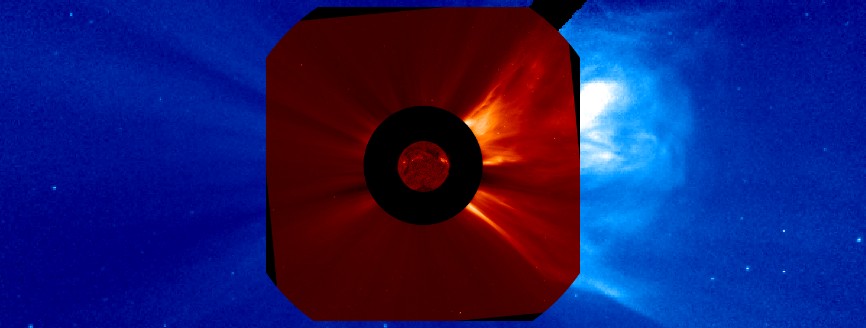
An impulsive solar flare measuring M6.7 (R2 – Moderate radio blackout) erupted from Active Region 2529 at 00:29 UTC on April 18, 2016. The event started at 00:14 and ended at 00:39 UTC. This was the first M-class solar flare since M1.1 on February 15, 2016, the sixth M-class since the year began and the largest solar flare since M7.6 on September 28, 2015.
A Type II (estimated velocity 1 869 km/s) and a Type II Radio Emission were associated with today's event. Type IV emissions occur in association with major eruptions on the Sun and are typically associated with strong Coronal Mass Ejections (CMEs) and solar radiation storms.
Additionally, A 10cm Radio Burst lasting 1 minute (peak flux 120 sfu) was associated with the event. A 10cm radio burst indicates that the electromagnetic burst associated with a solar flare at the 10cm wavelength was double or greater than the initial 10cm radio background. This can be indicative of significant radio noise in association with a solar flare. This noise is generally short-lived but can cause interference for sensitive receivers including radar, GPS, and satellite communications.
A CME was produced by this event. However, because this region is so close to the west limb, the eruption was mostly directed away from our planet. Analysis is underway to determine if there is an Earth-directed component.
Region 2529 has 'beta-gamma' magnetic configuration and is capable of producing more M-class solar flares in the days ahead. Radio blackouts and glancing blow CMEs are possible before the region starts its farside rotation.

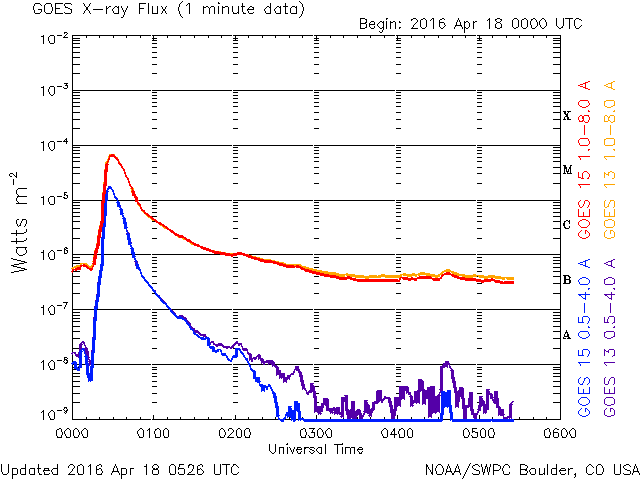
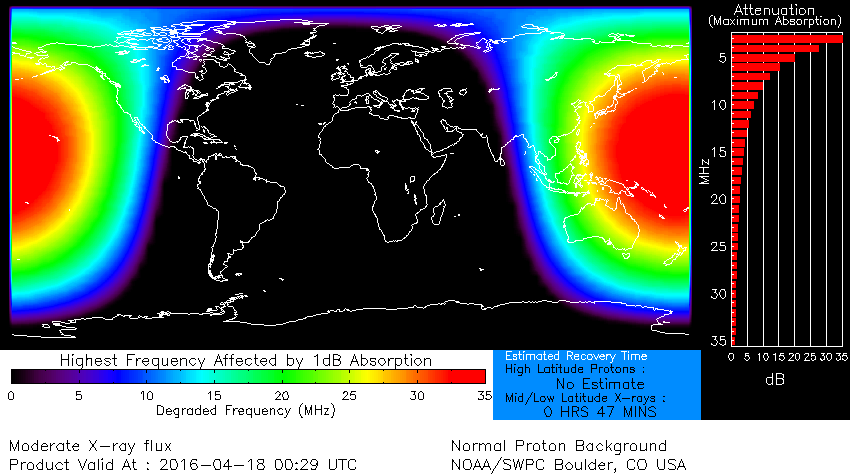

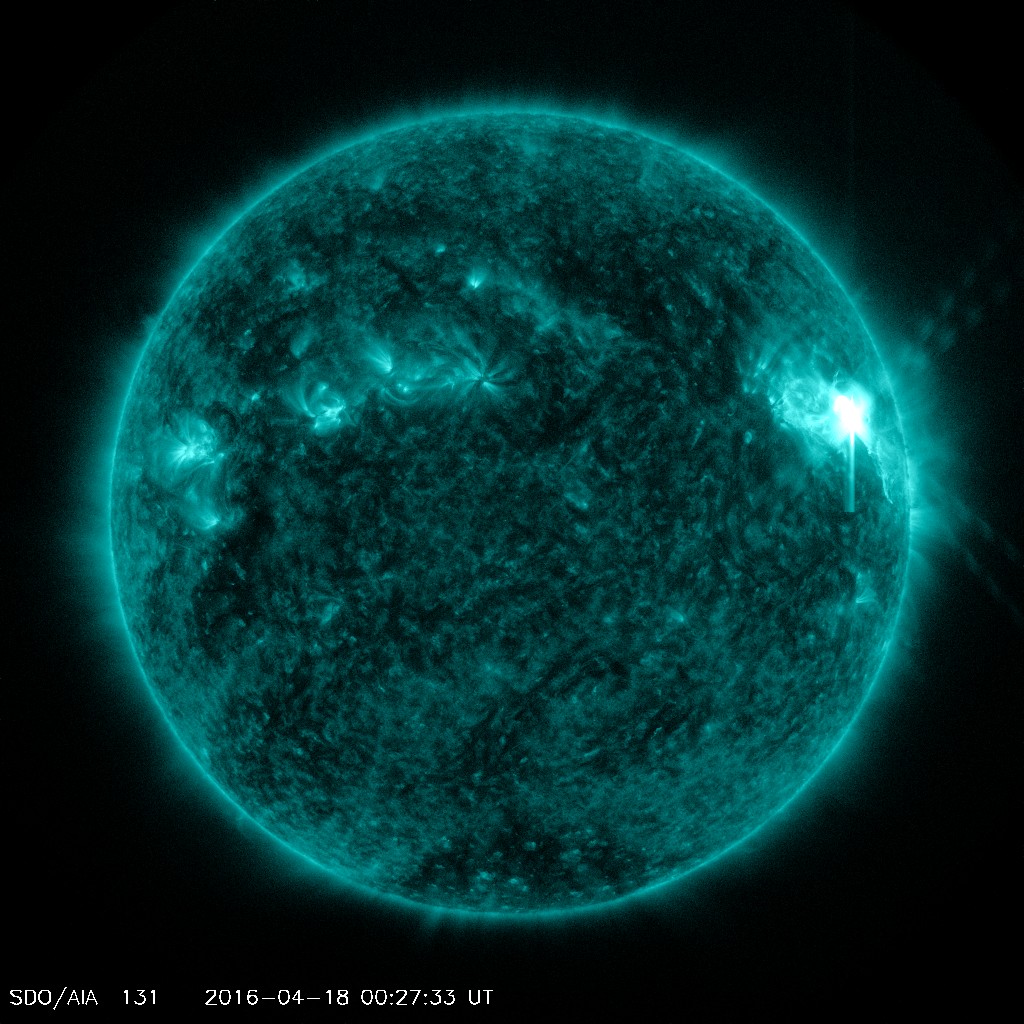

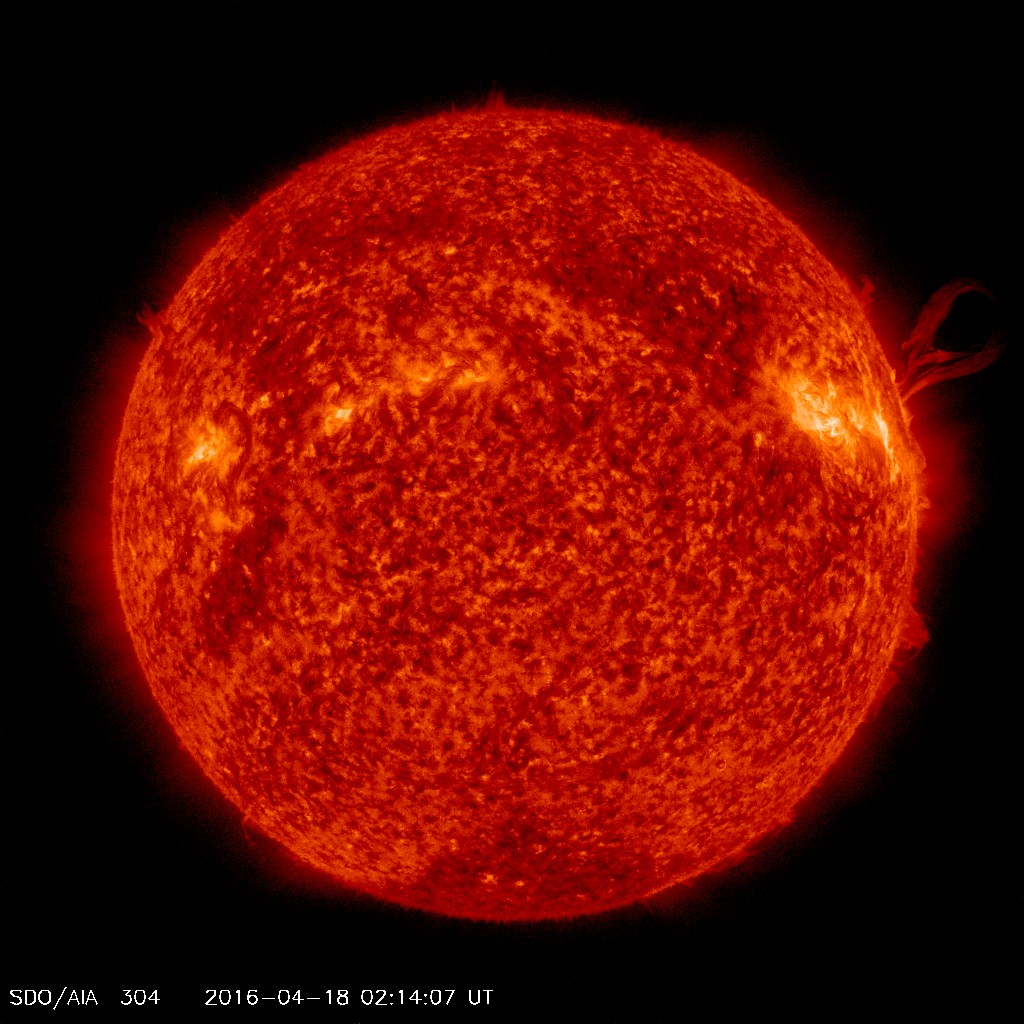

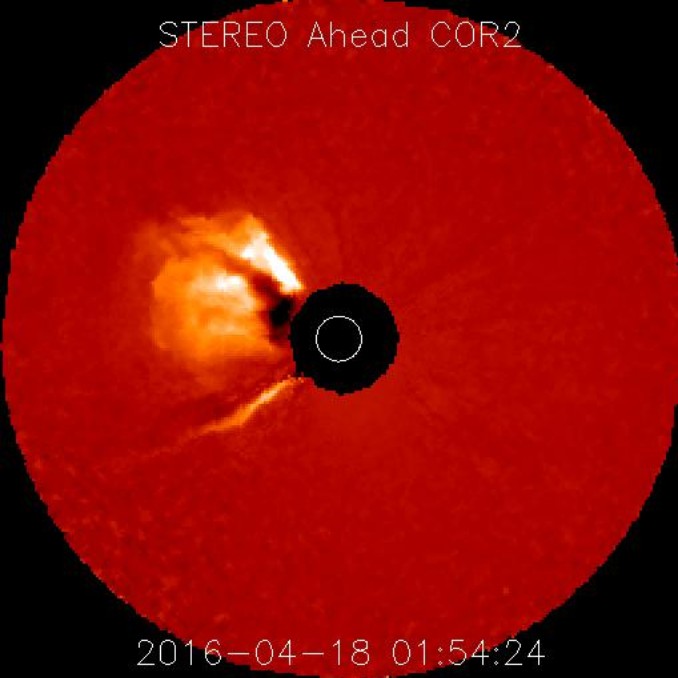

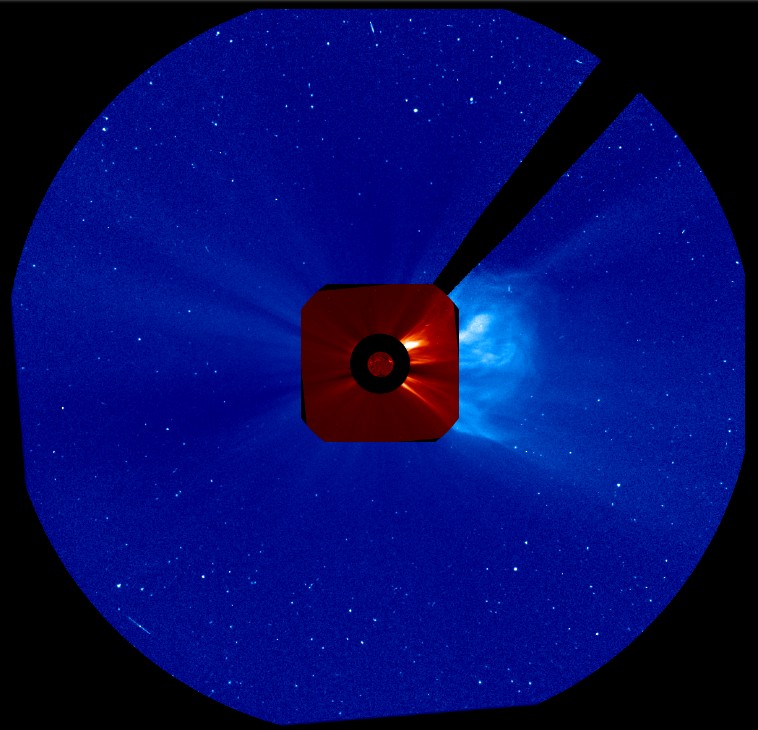

CME produced by the M6.7 solar flare on April 18, 2016. Credit: NASA/SDO AIA + ESA/NASA SOHO LASCO C2 & C3
Sunspots
There are currently two numbered sunspot regions on the Earth side of the Sun.
AR 2529 ('beta-gamma'), the source of today's M6.7 flare, continues its dissipation of intermediate and trailer spots and will soon start its farside rotation. AR 2532 ('beta') has just started its Earth side rotation.
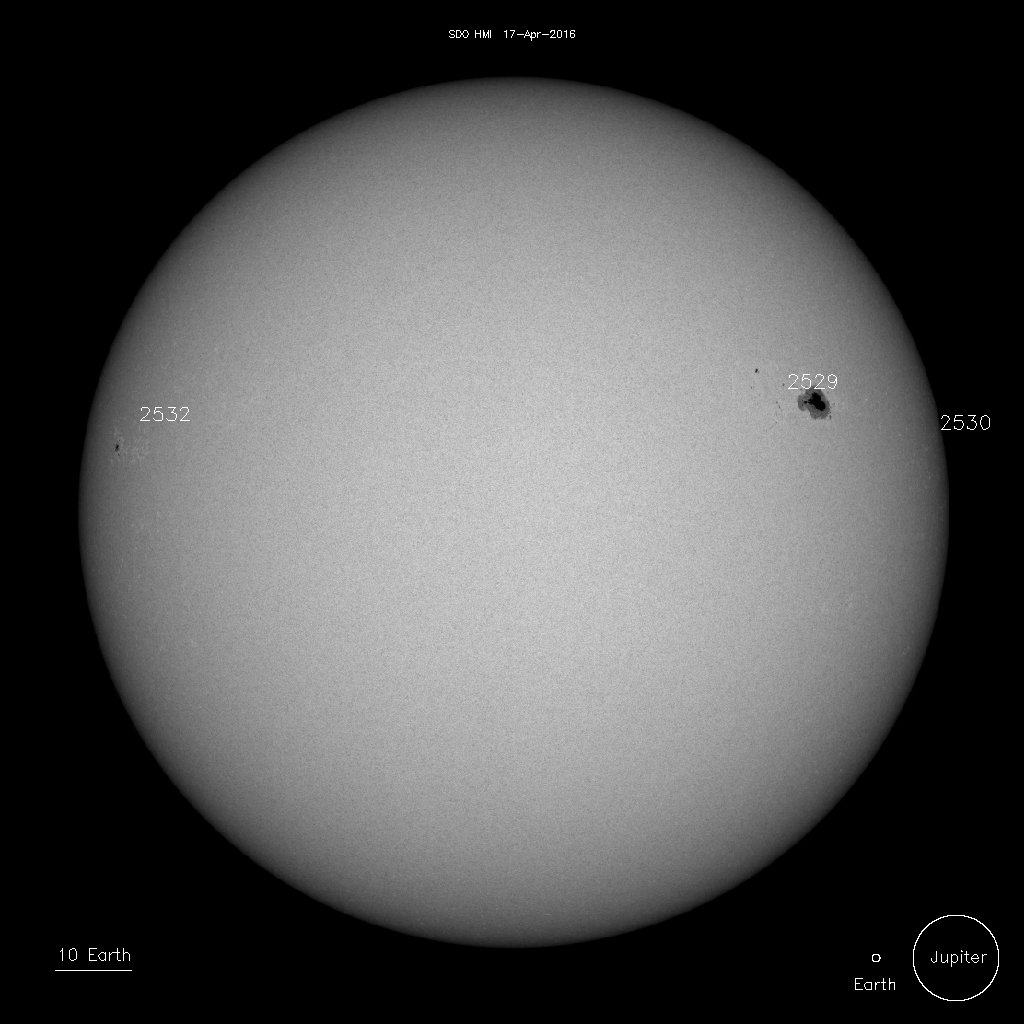

Sunspots on April 18, 2016. Image credit: NASA/SDO HMI
2529 – beta-gamma
2532 – beta
SWPC alerts
Space Weather Message Code: ALTTP4
Serial Number: 525
Issue Time: 2016 Apr 18 0053 UTC
ALERT: Type IV Radio Emission
Begin Time: 2016 Apr 18 0034 UTC
www.swpc.noaa.gov/noaa-scales-explanation
Description: Type IV emissions occur in association with major eruptions on the sun and are typically associated with strong coronal mass ejections and solar radiation storms.
***
Space Weather Message Code: ALTTP2
Serial Number: 1042A 10cm radio burst indicates that the electromagnetic burst associated with a solar flare at the 10cm wavelength was double or greater than the initial 10cm radio background. This can be indicative of significant radio noise in association with a solar flare. This noise is generally short-lived but can cause interference for sensitive receivers including radar, GPS, and satellite communications.
Issue Time: 2016 Apr 18 0052 UTC
ALERT: Type II Radio Emission
Begin Time: 2016 Apr 18 0030 UTC
Estimated Velocity: 1869 km/s
www.swpc.noaa.gov/noaa-scales-explanation
Description: Type II emissions occur in association with eruptions on the sun and typically indicate a coronal mass ejection is associated with a flare event.
***
Space Weather Message Code: SUM10R
Serial Number: 683
Issue Time: 2016 Apr 18 0049 UTC
SUMMARY: 10cm Radio Burst
Begin Time: 2016 Apr 18 0023 UTC
Maximum Time: 2016 Apr 18 0024 UTC
End Time: 2016 Apr 18 0024 UTC
Duration: 1 minutes
Peak Flux: 120sfu
Latest Penticton Noon Flux: 102 sfu
www.swpc.noaa.gov/noaa-scales-explanation
Description: A 10cm radio burst indicates that the electromagnetic burst associated with a solar flare at the 10cm wavelength was double or greater than the initial 10cm radio background. This can be indicative of significant radio noise in association with a solar flare. This noise is generally short-lived but can cause interference for sensitive receivers including radar, GPS, and satellite communications.
***
Space Weather Message Code: SUMXM5
Serial Number: 143
Issue Time: 2016 Apr 18 0044 UTC
SUMMARY: X-ray Event exceeded M5
Begin Time: 2016 Apr 18 0014 UTC
Maximum Time: 2016 Apr 18 0029 UTC
End Time: 2016 Apr 18 0039 UTC
X-ray Class: M6.7
Location: N10W62
NOAA Scale: R2 – Moderate
www.swpc.noaa.gov/noaa-scales-explanation
Potential Impacts: Area of impact centered primarily on sub-solar point on the sunlit side of Earth.
Radio – Limited blackout of HF (high frequency) radio communication for tens of minutes.
Featured image credit: CME produced by the M6.7 solar flare on April 18, 2016. Credit: NASA/SDO AIA + ESA/NASA SOHO LASCO C2 & C3

As above, so below; as below, so above.
Sun activities low? If so, I would concede he, the one, doesn’t exist.
Fire monkey or not, only one judge. No one owns anything on this earth . Revealing…